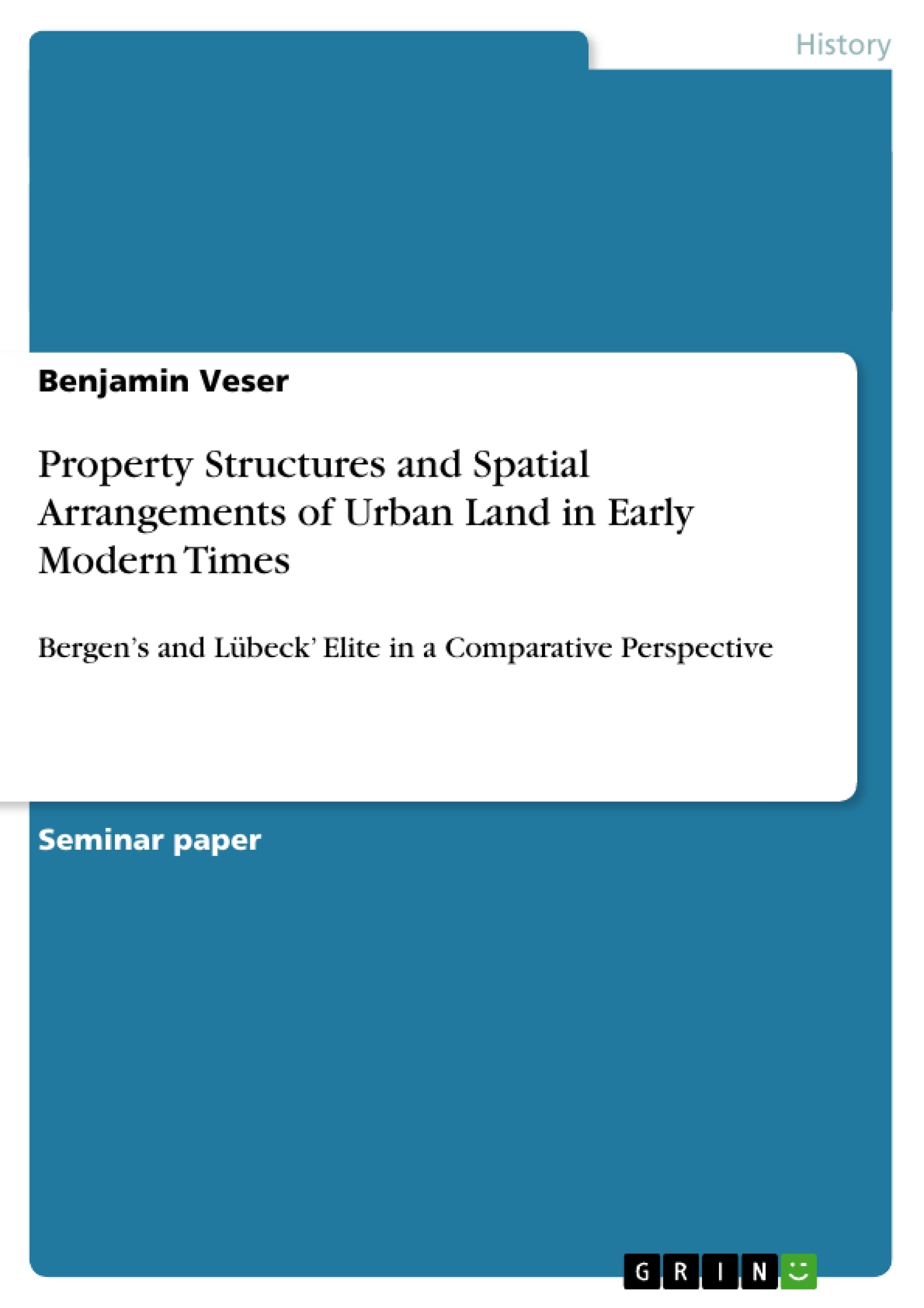Property is one of the key elements of the structure in a town. Not only does it tell us about the owner of urban space who might have had influence through this property, but also who lived on this property. It is interesting if the owner of the property is identical with the one who lived on the land and the one who owned the house. By studying these topics, conclusions of the social structure of a town can be drawn. It is the idea of space, certainly not without the consideration of time, that leads to historical knowledge in a way of multidimensional understanding.
Here this is examined by comparing the two Hansa towns Bergen and Lübeck. Two towns that supposedly show similar economic and demographic structures. Thus differences can be made more obvious. To get a narrow and exact view on the topic only the elite of the town, the social group we know most about through the sources, is regarded.
It is worth knowing how external effects like economical changes as well as social developments and demographical evolutions may had impact on urban structures like for example such of property of land or buildings. The focus should be on the question how the political and economic elites did compete this challenges in the regarded time period from the 16th to the 18th century and what was the impact on property structures.
It was important for the leading groups to be present in the town centre for different reasons (e.g. the need for control), but what exactly was the place of the elite? How important was property of urban land for the leading groups in the Early Modern times? Did they keep their urban property or are there changes of property to be regarded during this period? Finally are there huge differences between Bergen and Lübeck, two towns that on a first view seem to be so likewise?
On the way to answer these questions some general considerations about urban theories and especially spatial arrangements are made. Further the question of what defines the elite and what are the settings in Norwegian and German society is elaborated including theoretical considerations on the topic. The economic and social changes in both countries are as well outlined before the towns are separately discussed. The society and its determination is regarded as well as urban space in connection with property and living space.
Inhaltsverzeichnis (Table of Contents)
- Introduction
- Theoretical and Methodological Considerations
- Theories on preindustrial Towns: Sjoberg and Carter
- Definition of “Stand”, Estate and Class according to Max Weber and the systems in Germany and Norway
- Social and economic changes in towns from the 16th to the 18th century
- Social and economic change in Lübeck
- Social and economic change in Bergen/ Norway
- The elite in the urban area: The cases of Lübeck and Bergen
- Lübeck
- Social structure and legal status of plots in town
- The social places in town
- Bergen
- Social structure, legal rights
- The social places in town
- Comparison of the two towns
- Lübeck
- Conclusion
Zielsetzung und Themenschwerpunkte (Objectives and Key Themes)
This study aims to examine the property structures and spatial arrangements of urban land in early modern Bergen and Lübeck, two Hanseatic towns with similar economic and demographic structures. By comparing these two cities, the study seeks to identify the influence of property ownership on the social structure and highlight any differences or similarities in the spatial distribution of the elite within these urban environments. It investigates how external factors, including economic changes, social developments, and demographic evolutions, impacted the spatial distribution of property and the role of the elite in the towns from the 16th to the 18th century.
- Property Ownership and its Role in Social Structure
- Spatial Arrangements of Urban Land and the Elite
- Economic and Social Changes in Preindustrial Towns
- Comparison of Urban Development in Lübeck and Bergen
- Influence of External Factors on Property Structures
Zusammenfassung der Kapitel (Chapter Summaries)
- Introduction: This chapter introduces the key elements of property in urban areas, highlighting its importance in understanding social structure and spatial arrangements. It outlines the study's focus on the elite in two Hanseatic towns, Bergen and Lübeck, and emphasizes the significance of comparing these cities to highlight differences and similarities.
- Theoretical and Methodological Considerations: This chapter explores relevant urban theories, particularly Sjoberg's model of concentric circles and Carter's emphasis on the pre-eminence of central areas in preindustrial towns. It delves into the definition of "Stand", estate, and class according to Max Weber, highlighting the complexities of social hierarchy in preindustrial cities.
- Social and economic changes in towns from the 16th to the 18th century: This chapter analyzes the economic and social changes that occurred in Lübeck and Bergen during the period, shedding light on the evolving social and economic structures of these towns.
- The elite in the urban area: The cases of Lübeck and Bergen: This chapter delves into the specific characteristics of the elite in Lübeck and Bergen. It examines the social structure, legal status of plots in town, and the social places occupied by the elite in both cities, providing a comparative analysis.
Schlüsselwörter (Keywords)
The central focus of this study lies in the relationship between property, urban space, and social structure in early modern towns, specifically in Bergen and Lübeck. Key concepts include urban theories, social hierarchy, estates, and spatial arrangements. The study utilizes historical research methods to analyze property structures and the influence of economic and social changes on the elite in these two Hanseatic cities.
- Quote paper
- Benjamin Veser (Author), 2007, Property Structures and Spatial Arrangements of Urban Land in Early Modern Times , Munich, GRIN Verlag, https://www.grin.com/document/93916



